How to learn chords, not memorise them.
Noisy Clan was formed with two quintessential principles: 1. Get more people to play more. 2. Education is golden, so let’s make it fun. From the dawn of time, it seems to be a common theme that musicians (self taught included) avoid, or heavily dislike music theory over playing itself. And understandably so.
Of course, everyone wants to PLAY. It's fun, it sounds awesome, and that's why you bought the instrument in the first place, right? To play it. But the one key ingredient missing from this recipe is music theory. The foundation of music, the building blocks behind every masterpiece. And you can avoid it all you want, but in order to PLAY MORE, and to play more successfully, music theory is your best friend.
As a product design company, we design for musicians by musicians. It is a particularly unique place to sit, in that we understand the needs, wants, desires and general pet peeves musicians run into. So how do we utilise our design skills, and combine our two core principles? Well, something like this:
Education = Playing More (when X is designed correctly)
To put this into perspective, a typical chord chart will look something like this:

Noisy Chord Chart looks like this (Shameless plug):

As a company, we definitely spend WAY too much time agonising over details such as print size, material, card thickness, colours, lamination … to name just a few relevant to printing. We argue deeply about all our design choices, especially ones that stray from the standard. There are a couple of ways that our chord charts differ from others:
- The fretboard diagrams read with the nut to the left, rather than on top.
- We don’t prescribe what fingers to use when fretting.
We feel that the typical vertical orientation of charts make them harder to read. As a guitarist we typically look over the top of our instruments neck and see the nut to the left and the low E string closest to us. This is how we orient our diagrams. We also share triads and scales which typically show more of the guitar fretboard which also requires a horizontal orientation matching our chord charts.
A chord chart can be used simply as a reference tool to identify how to play a particular chord. For instance, if you want to play B minor, find this chord in the table and fret the notes shown. This is being given a fish. We want to show you how to fish. This is why we don’t show chord fingerings. Fingerings can change. Frequently you may only play a fragment of the chord which changes how you approach playing that chord. Everyone is different! Classical guitarists frown on left hand thumb use but there are guitarists with freakishly long thumbs (John Mayer, Jimmy Hendrix…) that have been dazzling listeners with their thumb fretting.
Probably the main reason that we don’t show fingerings is that we want to show you how the chord is constructed. This is MUCH more valuable information. This is one of the things that I wish I had been shown much earlier in my musical journey. Chords are very simple, built from the root with the third and the fifth. That is only three notes, so when you play all six strings some or all of those notes are simply being repeated and are unnecessary except for tonal reasons. I still feel guilty when I don’t play the ‘full’ chord, yet I really don’t need to play all six strings. Most guitars we hear on the radio rarely will be playing all six strings at the same time.
When you know how a chord is constructed and how that construction shows itself in the chord shape you open up a whole new world of possibilities. It becomes easy to build chords from the basic major shape. We show versions of the chord from left to right which is easier for most readers to follow. On the left we show the major chord and then variations to the right. The variations are called out in colour and reveal how the chords are built.
So, that is why we don't give a fish! To stay true to who we are, and what we value, we chose not to be a crutch you can lean on. We want you to fish on your own! And who knows, maybe the next Hendrix is among us …
SIDE NOTE: If you have no idea what we are talking about but read along anyway - firstly, thanks for sticking around. Secondly, click here to download your FREE chord chart. Then you might understand what this fish metaphor is all about!








